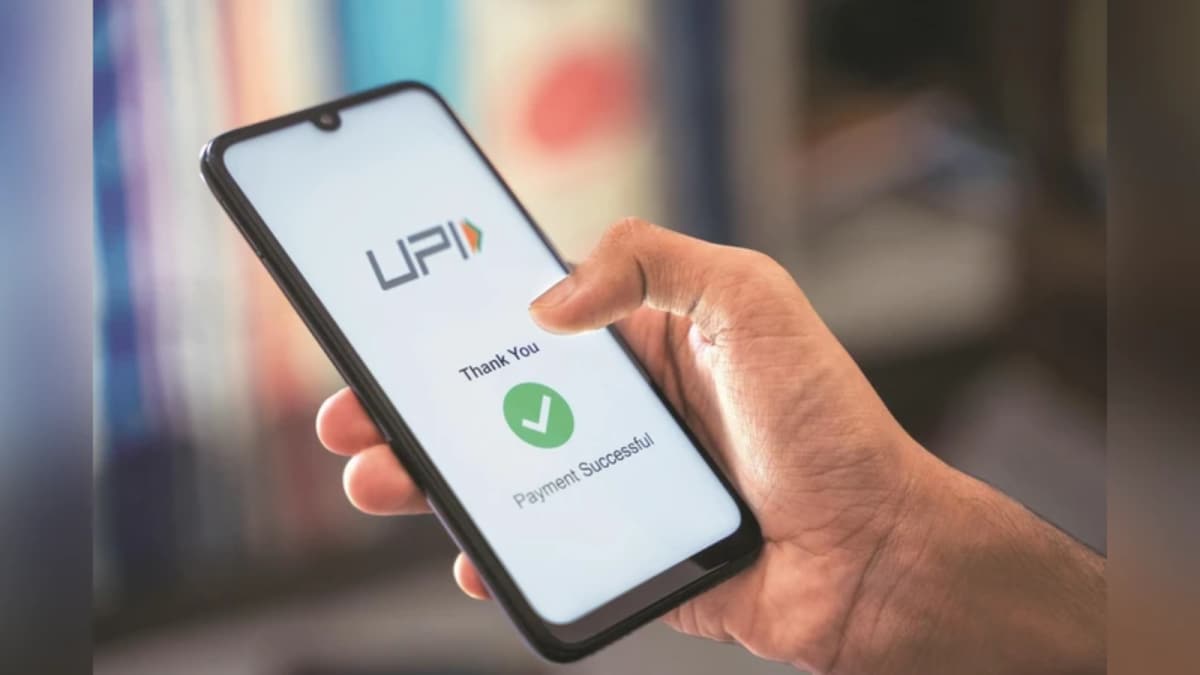Business
Indians Can Now Make Payments Through UPI Across Qatar

New Delhi: Indian travellers can now use Unified Payments Interface (UPI) in Qatar, with Qatar Duty Free outlets becoming the first merchant to go live, according to a release from NPCI International Payments Limited (NIPL). The development comes through a partnership between NIPL and Qatar National Bank (QNB), enabling UPI acceptance across Qatar via QR code-based transactions at point-of-sale terminals. The system is powered by NETSTARS’ payment solution and is expected to ease transactions for Indian visitors, who are the second largest group of international tourists to Qatar.
The introduction of UPI in Qatar allows Indians to make real-time payments at tourist attractions and retail outlets, reducing the need for cash or currency exchange. The move will also support Qatar’s retail and tourism sectors by boosting transaction volumes for merchants acquired by QNB.
Ritesh Shukla, MD & CEO of NIPL, said, “We aim to enhance the acceptance of UPI globally and create a truly interoperable global payment network. The partnership with QNB is a step towards this journey. It will help millions of Indian travellers make seamless, secure digital transactions and reduce their dependence on cash. As UPI makes its mark, we are focused on driving interoperability and making cross-border payment experiences hassle-free for users.”
From Qatar’s perspective, the introduction of UPI is being seen as a boost for its economy. Yousef Mahmoud Al-Neama, Group Chief Business Officer of QNB, said, “We are excited to introduce UPI in Qatar and proud to be at the forefront of innovating the payment landscape.
This milestone not only enhances the convenience for Indian travelers but also brings significant benefits to the Qatari market by promoting cashless transactions, boosting retail and tourist sectors, and strengthening interoperability in the payments ecosystem. Importantly, it will also enable local merchants to thrive by attracting more customers and providing them with seamless digital payment options.”
Qatar Duty Free, which operates outlets at Hamad International Airport, is the first merchant to offer UPI payments.
Thabet Musleh, Chief Retail & Hospitality Officer, Qatar Airways Group, said, “At Qatar Duty Free, we are committed to enhancing convenience and accessibility for travellers. As the first entity in Qatar to enable UPI as a payment option, we are proud to offer Indian travellers a seamless, secure, and cashless transaction experience at our outlets. This partnership with NPCI International and Qatar National Bank reflects our dedication to embracing innovative payment solutions that cater to the evolving needs of our diverse customer base. By integrating UPI, we aim to elevate the retail experience at Hamad International Airport, ensuring a smoother journey for millions of visitors.”
Technology partner NETSTARS also highlighted the significance of the launch.
Tsuyoshi Ri, Representative Director and CEO of NETSTARS Co., Ltd., said, “We are honoured to be part of this strategic partnership and milestone, enabling UPI for the first time in Qatar together with NPCI International, Qatar Airways Group and Qatar National Bank. This aligns with our mission to expand seamless and secure payment experiences globally. We are proud to contribute to this launch in Qatar, which will empower local merchants in Qatar to accept digital payments conveniently and efficiently from millions of international travellers.”
Business
Rail fares to be frozen for first time in 30 years

Rail fares are to be frozen for the first time in 30 years, the Government has announced.
Ministers said the move will save millions of rail travellers hundreds of pounds off season tickets, peak and off-peak returns between major cities.
Commuters on the more expensive routes will save more than £300 a year.
The Government said the changes are part of its plans to rebuild a publicly owned Great British Railways that will deliver value for money through bringing rail tickets into the 21st century with tap in tap out and digital ticketing, alongside investing in superfast wifi.
The announcement applies to England and services run by English train operating companies.
Chancellor Rachel Reeves said: “Next week at the Budget I’ll set out the fair choices to deliver on the country’s priorities to cut NHS waiting lists, cut national debt and cut the cost of living.
“That’s why we’re choosing to freeze rail fares for the first time in 30 years, which will ease the pressure on household finances and make travelling to work, school or to visit friends and family that bit easier.”
Transport Secretary Heidi Alexander said: “We all want to see cheaper rail travel, so we’re freezing fares to help millions of passengers save money.
“Commuters on more expensive routes will save more than £300 per year, meaning they keep more of their hard-earned cash.
“This is part of our wider plans to rebuild Great British Railways the public can be proud of and rely on.”
Ministers said a typical commuter travelling to work three days a week using flexi-season tickets will save £315 a year travelling from Milton Keynes to London, £173 travelling from Woking to London and £57 from Bradford to Leeds.
The freeze will apply to all regulated fares, including seasons, peak returns for commuters and off-peak returns between major cities, benefitting more than a billion passenger journeys said the Government.
The move was warmly welcomed by rail unions and passenger groups.
Mick Whelan, general secretary of the train drivers union Aslef, said: “We are pleased that after 14 years of the Tories pricing people off our railways, this Labour Government is helping people to commute to work and travel for pleasure.
“This is the right decision, at the right time, to help passengers be able to afford to make that journey they need to take, and to help grow our railway in this country, because the railway is Britain’s green alternative – taking cars and lorries off our congested roads and moving people and goods safely around our country in an environmentally-friendly way.”
Alex Robertson, chief executive of passenger watchdog Transport Focus said: “Freezing fares will be extremely welcome news for rail passengers who consistently tell us value for money is their highest priority, alongside trains running on time. It should also make it more attractive for people to use the train more often or for the first time.
“We’ve always recognised there is a difficult balance to strike in how the railway is funded between fares and public subsidy. That makes today’s announcement particularly welcome.”
Eddie Dempsey, general secretary of the Rail, Maritime and Transport union, said: “This freeze is a welcome first step towards better value fares for passengers and shows that Government plans for public ownership of the railways can deliver real tangible benefits for passengers.
“More affordable fares will encourage greater use of public transport, supporting jobs, giving a shot in the arm to local economies and helping to improve the environment.
“As more passengers return to the railway, it is worth remembering that a well-staffed network with ticket office workers on hand to help people find the best and most affordable tickets, is the best way forward for the rail industry.”
TUC general secretary Paul Nowak said: “The disastrous privatisation experiment left regular train travel unaffordable and unreliable for far too many, but this Government is turning the page on the failed era of privatisation by delivering publicly-owned railways which put passengers above profit.
“This rail fare freeze will be a huge relief to working people who have got used to paying through the nose for a shabby service.”
A Rail Delivery Group spokesperson said: “The Government’s decision to freeze fares is good news for customers. Use of the railway continues to grow year on year, helping people travel to work and connect with family, while supporting a more sustainable future. We want our railways to thrive, that’s why we’re committed to working with Government to ensure upcoming railway reforms deliver real benefits for customers.”
The Conservatives welcomed the freeze but said the Government was “late to the platform”.
Shadow transport secretary Richard Holden said: “In Government, the Conservatives kept fares on the right track with below-inflation rises and consistently called for no further hikes to protect hard-working commuters.”
Business
Markets reforms: Govt to table Securities Markets Code Bill in Winter session; unified law to merge Sebi, Depositories & trading Acts – The Times of India

The government has listed the Securities Markets Code Bill 2025 for introduction in the Winter session of Parliament starting December 1, according to a Lok Sabha bulletin. The unified legislation is aimed at boosting ease of doing business and reducing regulatory friction across India’s financial markets. The Bill proposes merging key securities laws, including the Securities and Exchange Board of India Act, 1992, the Depositories Act, 1996, and the Securities Contracts (Regulation) Act, 1956, into a single code. The unified framework was first announced in the Union Budget 2021-22, when Finance Minister Nirmala Sitharaman proposed consolidating multiple laws governing securities markets — including the Government Securities Act, 2007 — into a rationalised code. Experts said the move could reduce compliance costs and minimise overlaps between rules enacted by Sebi, depositories and the central government. Bringing the Government Securities Act within a unified code could also strengthen credibility of sovereign borrowing and help channel more foreign capital, they noted.
Business
Index reshuffle: IndiGo parent to enter Sensex from Dec 22; Tata Motors Passenger Vehicles dropped – The Times of India

InterGlobe Aviation, the operator of IndiGo, will be included in the BSE’s 30-stock benchmark index Sensex from December 22, the BSE Index Services said on Saturday.As part of the reconstitution exercise, Tata Motors Passenger Vehicles Ltd will be dropped from the index, the announcement added, PTI reported.The changes will take effect from market open on Monday, December 22, and have been made by BSE Index Services Pvt Ltd (formerly Asia Index Pvt Ltd).In the broader BSE 100 index, IDFC First Bank Ltd will be added, replacing Adani Green Energy Ltd. Within the BSE Sensex 50 index, Max Healthcare Institute Ltd will be included, while IndusInd Bank Ltd will be removed.Further, in the BSE Sensex Next 50 index, IndusInd Bank and IDFC First Bank will replace Max Healthcare Institute and Adani Green Energy.
-

 Tech1 week ago
Tech1 week agoNew carbon capture method uses water and pressure to remove CO₂ from emissions at half current costs
-

 Politics1 week ago
Politics1 week agoBritish-Pakistani honoured for transforming UK halal meat industry
-

 Business1 week ago
Business1 week agoThese 9 Common Money Mistakes Are Eating Your Income
-

 Sports1 week ago
Sports1 week agoTexas A&M officer scolds South Carolina wide receiver after touchdown; department speaks out
-

 Tech1 week ago
Tech1 week ago$25 Off Exclusive Blue Apron Coupon for November 2025
-

 Fashion1 week ago
Fashion1 week agoAfter London, Leeds and Newcastle, next stop Glasgow for busy Omnes
-

 Sports1 week ago
Sports1 week agoApple scrapping MLS Season Pass service in ’26
-

 Business1 week ago
Business1 week agoWhat’s behind Rachel Reeves’s hokey cokey on income tax rises?










